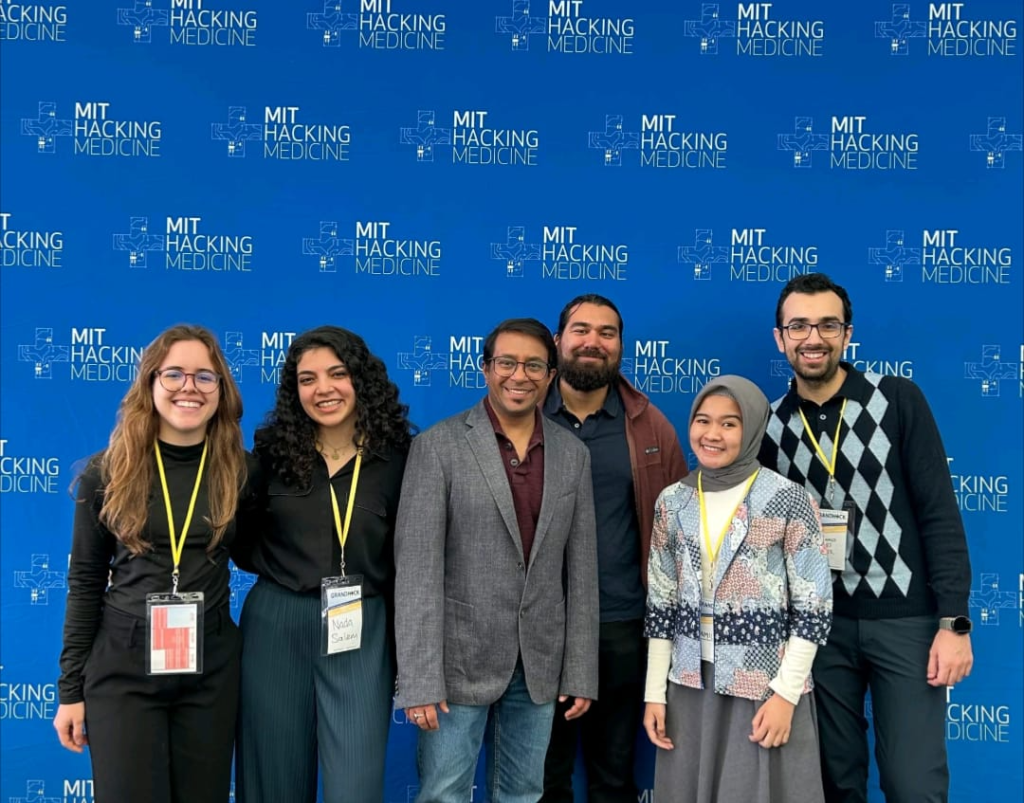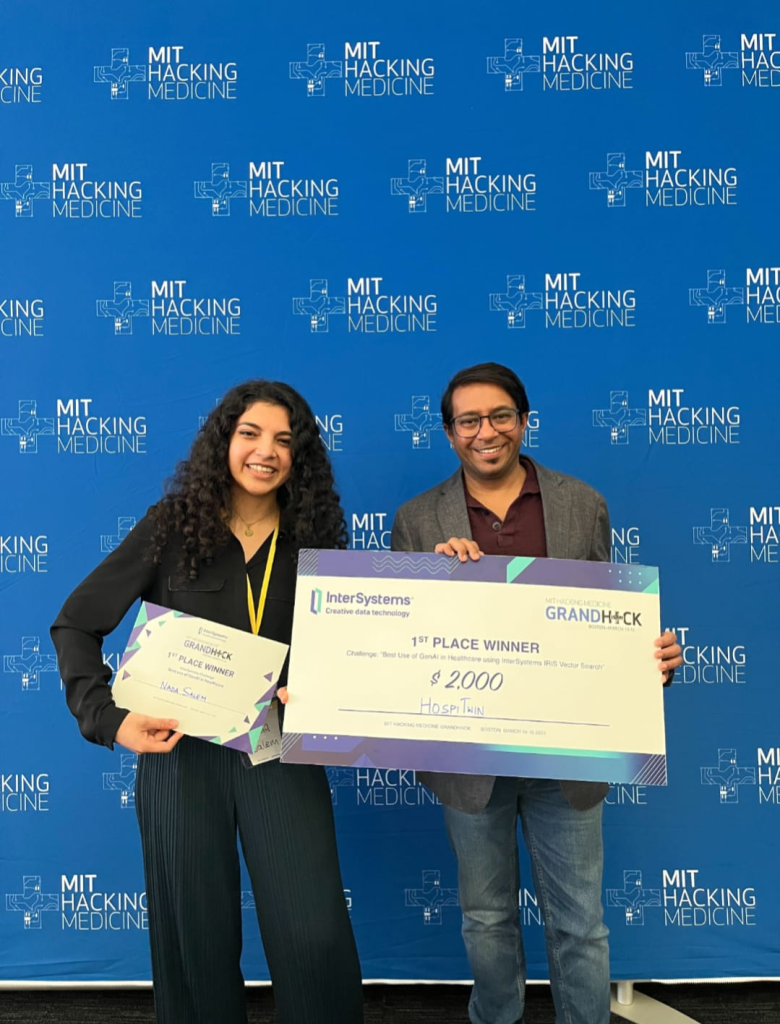
An exhilarating weekend of innovation and collaboration marked this year’s MIT Hacking Medicine, where participants tackled pressing healthcare challenges. Among the standout projects that emerged was HospiTwin, a digital twin solution for emergency department bottlenecks, which won the Intersystems challenge for best use of Generative AI in healthcare.
The journey for two members of the winning team, MBE students Nada Salem and Taposh Dutta Roy, began with different inspirations that converged at the hackathon. Taposh was intrigued after a conversation with fellow HMS student Tracy H. Salseth, who highlighted the event's intellectually stimulating environment. This curiosity was enough to motivate him to apply and secure a spot. Nada's path to the hackathon was different. She explains,
“My bioethics work focuses on ethical issues in emerging technology, including medical AI and diverse intelligence systems like brain organoid computing. When I saw that one of this year’s themes for MIT Hacking Medicine was ‘Transforming Intelligence,’ I knew the hackathon would be the right fit. Many of the bioethics issues we deal with today arise from resource constraints. Rather than simply accepting these limitations, what if we could transform the system to solve some of the root causes of the problems we face? That’s where AI can play a role. I joined the hackathon to be a part of the solution.”
The hackathon weekend was intense yet rewarding for the participants. Taposh, who flew in from San Francisco, described it as a carefully structured and intense multi-day event spanning from Friday at 4pm through Sunday at 6pm. “I double-checked all the logistics,” he explained, “It begins with a 45-second pitch session where about 30 to 40 participants present their ideas. Those who pitch then have until Saturday at 10am to form a team—a challenging task when you don’t know anyone. I pitched an idea focused on reducing emergency department (ED) boarding, a critical issue well-known in hospital operations and healthcare, but often unfamiliar to those outside the field. I connected with a fellow classmate and worked hard to bring others on board, eventually forming a team—only 10 are allowed. From there, we spent the weekend developing an end-to-end solution, addressing both the technical and business aspects of the problem.”

“We had less than 48 hours to bring our idea to life,” Nada added. The team’s diversity, composed of physicians, software engineers, bioethicists, and marketing professionals, was fundamental to their success. Their project, HospiTwin, addressed the critical issue of ED boarding. The idea was to create a “digital twin,” or virtual representation, of an emergency room floor to pinpoint bottlenecks causing extended patient wait times, a delay linked to increased mortality risks. It was inspired by InterSystems and Google Health, which hosted informational sessions throughout the weekend. Taposh’s background in healthcare operations, paired with a solid understanding of large language models (LLMs), helped the HospiTwin project win the “Intersystems Challenge for the Best Use of GenAI in Healthcare.” The team applied LLMs to conceptualize and test their solution during the event, ultimately enhancing the project’s viability.
For both Nada and Taposh, the hackathon was an unparalleled experience. Neither had participated in such an event before, yet both found it to be an empowering venture. “It pushed me out of my comfort zone,” Taposh said. Nada echoed this sentiment, emphasizing the lessons learned from iterative testing and teamwork under time constraints. “We learned to rapidly test different ideas, fail fast, and pivot to new ideas.”
Their victory at MIT's hackathon not only underscored their innovative prowess but also set a new benchmark for using AI technology to tackle pervasive healthcare challenges. As Taposh noted, the camaraderie and diversity within their team were pivotal to transforming their goal into reality, making their success all the more memorable.